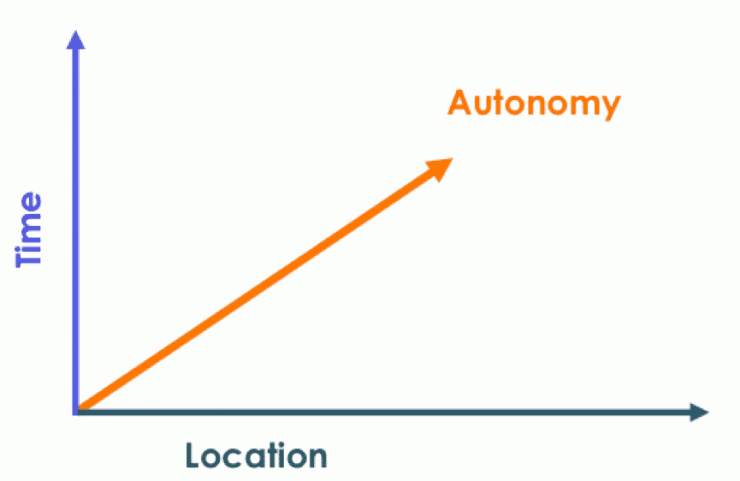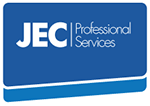
Defining Agile Working
Flexible Working and Remote Working are used to describe working at times and places away from the traditional full time 9-5 office based employment. There are therefore two dimensions of flexibility:
- Time i.e. when employees choose to work. There are many examples of this dimension: employees can work at different times of day (e.g. flexitime), different days of the week, (as part-time or compressed hours, job share), or certain weeks of the year (term-time working, annualised hours etc.) Time is a common factor in Flexible Working.
- Location i.e. where employees choose to work. Again there are many examples of this dimension: – in addition to the office, employees can choose to work at, or from, home, at workhubs, cafes, while travelling. Location is the defining factor of Remote Working.
Agile Working introduces a third dimension of flexibility, autonomy i.e. how people choose to work. In an organisation adopting Agile Working employees are empowered to choose how they work they work in order to meet the goals set for them to the standards required. There may be some limitations on agile workers such working within their limits of authority or competence and observing legal and regulatory requirements but they are generally not overly dependent on formal processes and procedures. So by this definition a way of working that uses the same processes and practices outside of normal working hours and/or at different locations is not Agile Working as it lacks this third dimension of autonomy.

3 dimensions of Agile Working
Clearly some job roles will more easily accommodate this freedom e.g. sales roles traditionally have a large degree of autonomy they are set targets and are typically lightly supervised. Whereas operational roles can be more challenging as they are often prescribed by detailed processes. It is more challenging, but not impossible, to introduce agile working into operational roles.
How Agile Working is different from Remote Working and Flexible Working
Flexible Working is generally regarded as largely a benefit to employees. Indeed the definition on the Gov.uk site is skewed in favour of employees “Flexible working is a way of working that suits an employee’s needs”. However, when implemented well Agile Working should provide benefits for both employers and employees.This is another way of defining Agile Working.
The goals of organisations in adopting agile working are to create a more responsive, efficient and effective organisation, which improves business performance and increases customer satisfaction. By empowering their employees to work how, where and when they choose there is evidence that they increase their productivity and provide service improvements by working in a way that suits them best. There is the very real prospect of a win-win situation. Organisations become more responsive and effective and their employees gain more control over the way they work.
Still confused by the word Agile? Let’s try defining Agile Working by defining agility. My dictionary defines agility as the ability to move nimbly with speed and ease. This is a definition of physical agility that could also be applied to an organisation that adopts Agile Working. While a definition of mental agility as flexibility of mind, a tendency to anticipate or adapt to uncertain or changing situations could be applied to employees engaged in Agile Working.

Physical agility
In his paper for the Royal Institution of Chartered Surveyors Paul Winter defines organisational agility as the ability to change routines without resistance. With this definition, the term Agile Working could be applied to any new office-based of ways working but most uses of the term imply that some form of flexible working is taking place, at least some of the time, outside the traditional office environment.So Agile Working could be regarded as a combination of Flexible Working and Business Transformation.
Another critical difference between other Agile Working and other forms of flexible working is commitment. While flexible working can be readily implemented with today’s technology Agile Working requires far more commitment from management and staff. However the potential gains are much greater. Many flexible working initiatives have been quite small scale with one-off savings but Agile Working promises transformational benefits of service improvements as well as continuing cost savings.
Work-Life Integration
Work-life balance is also a commonly understood concept linked with flexible working and has also been around for 15 years and is frequently mentioned in the media. Work-Life Balance is about setting boundaries between ‘worktime’ i.e. activities undertaken for your employer and ‘non-worktime’ for personal and social activities
Work-Life Integration is a newer and much less understood, and sometimes resisted term. Work-Life Integration is a concept linked to Agile Working.
Rather than being imposed by employers, it is being adopted by employees and is partly the consequence of technological developments. As lighter weight ‘BYOD’ personal devices, such as tablets and powerful smart phones, are easy to carry, they are nearly always to hand and have become an essential part of our modern lives. As a consequence we have ready access to business, as well as personal, information and systems. So within the space of a few minutes we can check our business and personal emails, check the weather forecast, book business travel or find a good restaurant. This ready access to information offers greater choice in the way we work. We no longer restrict working activities to worktime’ and personal/social activities to ‘non-worktime’ the boundary between the two has become porous. So as well as mixing personal and business information on the same device many people are now mixing their business and personal time. In this new way of working, sometimes also called a connected lifestyle, work-life balance is replaced by work-life integration.
In reality many employed senior professionals and managers already enjoy considerable discretion in when and where they work and are measured on outcomes and the quality of their work. Outside of the employed world, consultants, and other self-employed professionals have adopted this concept of Work-Life Integration, although they may not use the term. They often choose to work at evenings and weekends and substituting some weekday time for social activities. They have recognised the Agile Working benefits of more easily meeting deadlines and being able to address issues as and when they occur. In some cases, depending on their situation, some people are able to ‘wrap’ their work activities around high priority social and personal activities.
Managing this trade-off is a challenge for employers and employees. For employees the trade-off for more flexibility in working time is accepting greater responsibility in meeting work commitments. For employers the trade-off for staff becoming more responsible and responsive is adopting a relaxed attitude to their staff’ working practices, particularly to when staff choose to work. With the fuzzy boundaries of Work-Life Integration this new way of working cuts across established HR practices such as defined working hours and annual leave entitlement.
Even if the above has successfully explained the concepts of Agile Working understanding is only the first step in the introduction of Agile Working. The successful implementation of Agile Working requires a change in culture as well as changes in established practices and procedures.

